Abstract
Gibberellins (GAs) are either required for, or at least promote, the growth of the pea (Pisum sativum L.) fruit. Whether the pericarp of the pea fruit produces GAs in situ and/or whether GAs are transported into the pericarp from the developing seeds or maternal plant is currently unknown. The objective of this research was to investigate whether the pericarp tissue contains enzymes capable of metabolizing GAs from [14C]GA12-7-aldehyde ([14C]GA12ald) to biologically active GAs. The metabolism of GAs early in the biosynthetic pathway, [14C]GA12 and [14C]GA12ald, was investigated in pericarp tissue isolated from 4-day-old pea fruits. [14C]GA12ald was metabolized primarily to [14C]GA12ald-conjugate, [14C]GA12, [14C]GA53, and polar conjugate-like products by isolated pericarp. In contrast, [14C]GA12 was converted primarily to [14C]GA53 and polar conjugate-like products. Upon further investigations with intact 4-day-old fruits on the plant, [14C]GA12 was found to be converted to a product which copurified with endogenous GA20. Lastly, [2H]GA20 and [2H]GA1 were recovered 48 hours after application of [2H]- and [14C]GA53 to pericarp tissue of intact 3-day-old pea fruits. These results demonstrate that pericarp tissue metabolizes GAs and suggests a function for pericarp GA metabolism during fruit growth.
Full text
PDF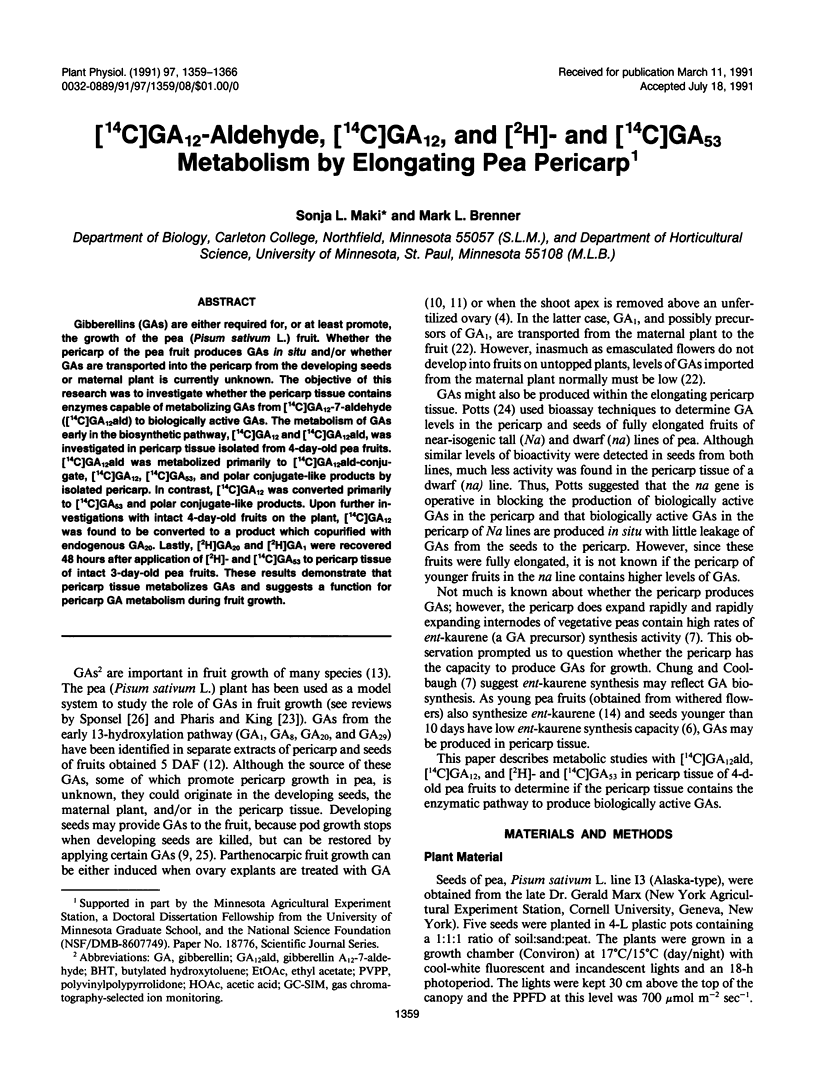
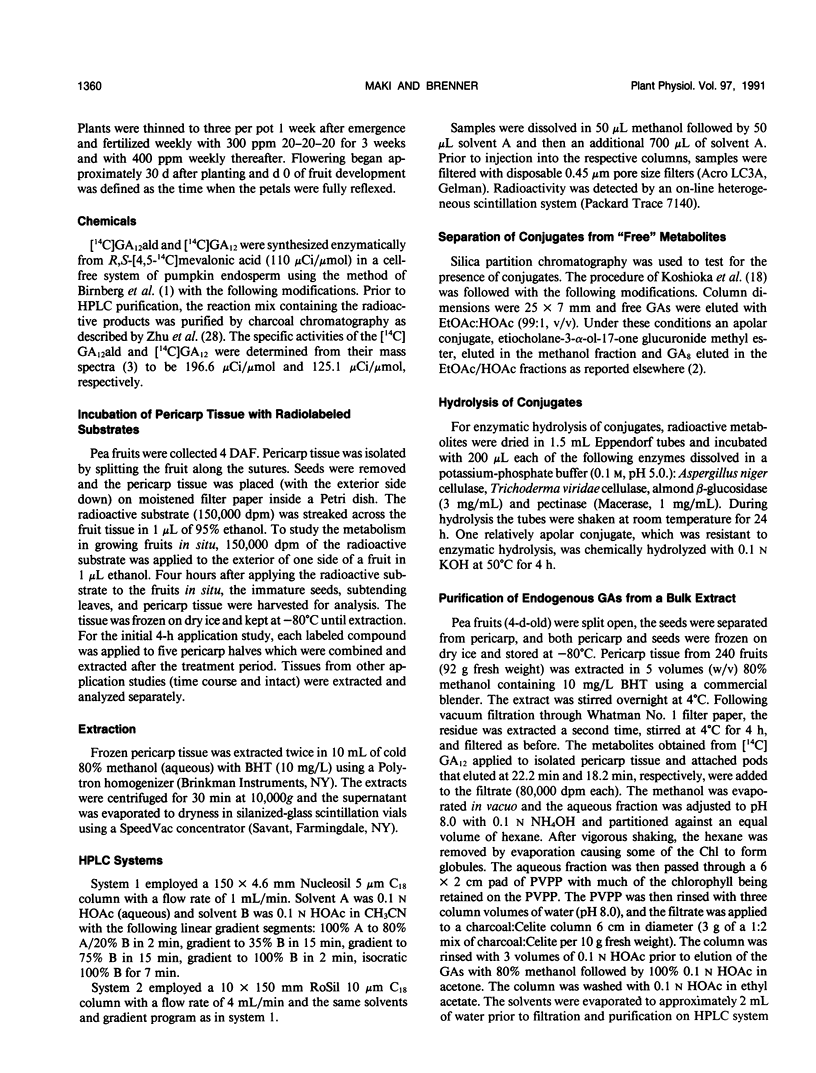
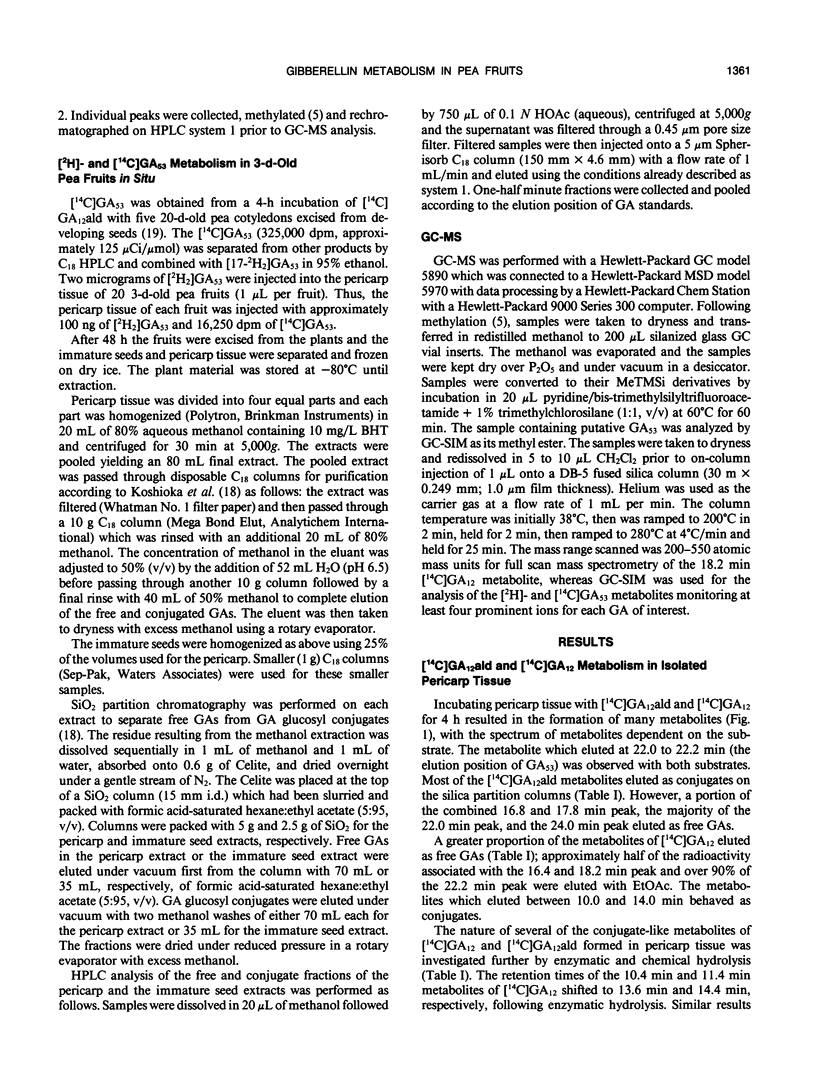
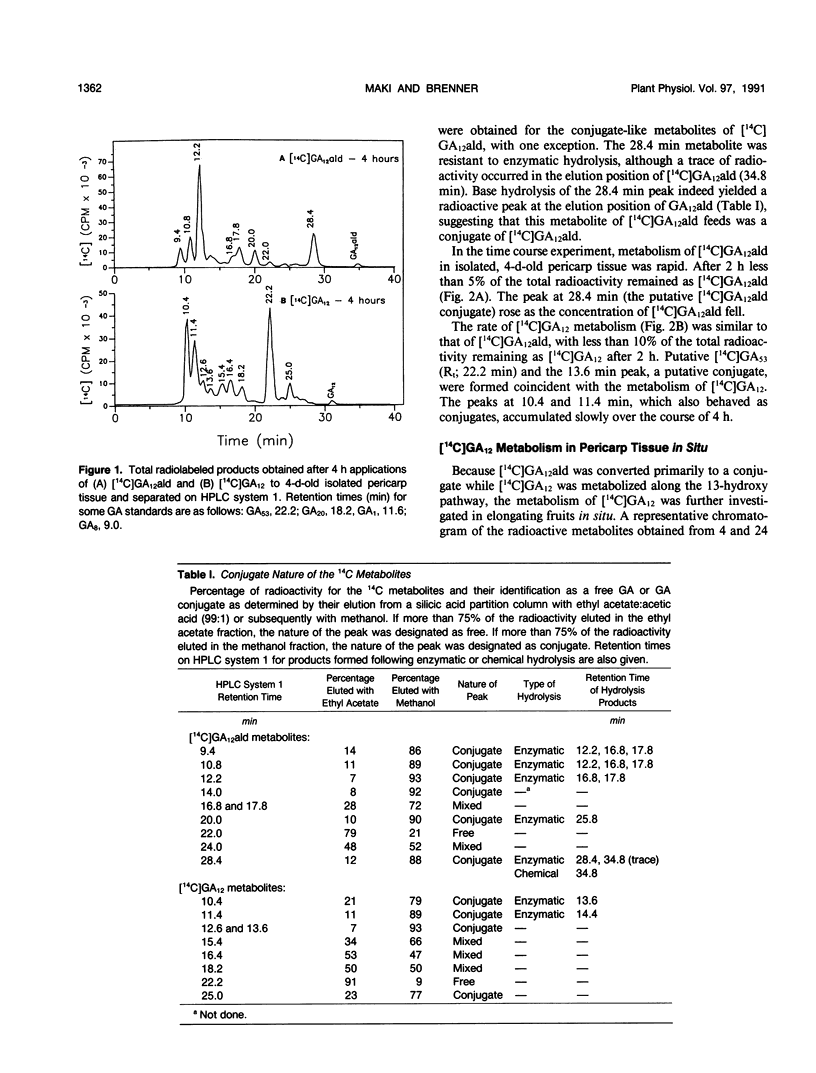
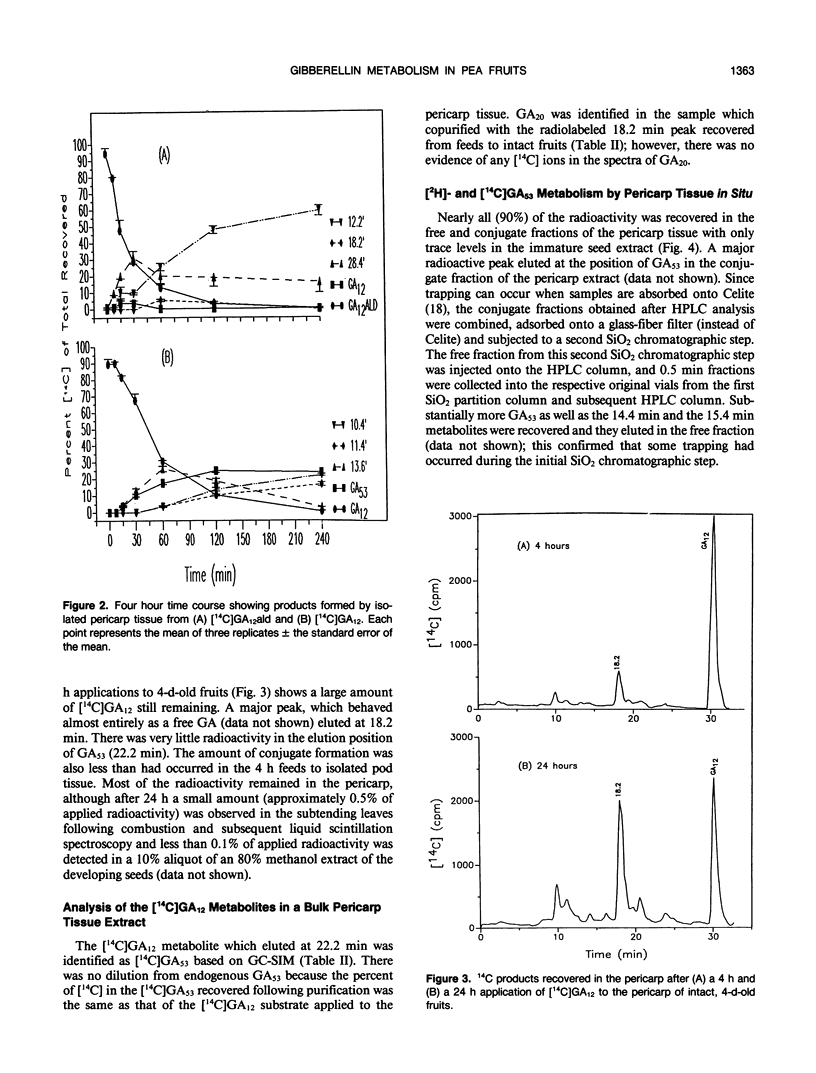
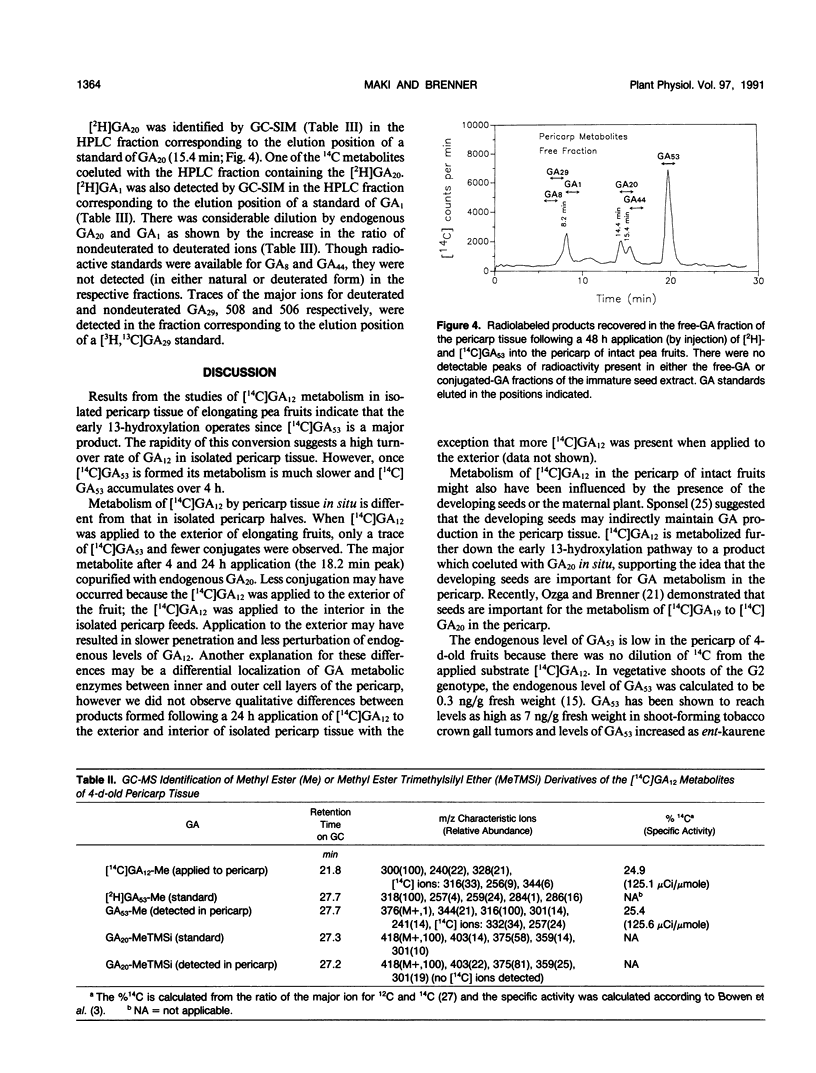
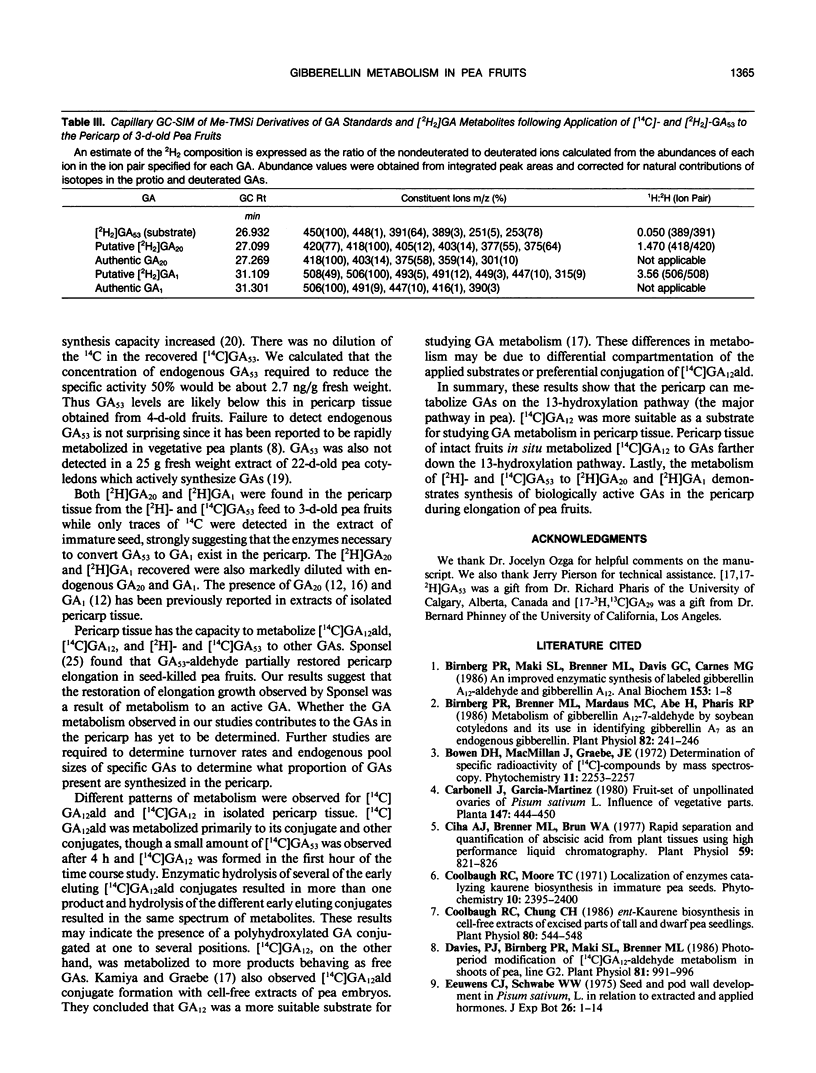
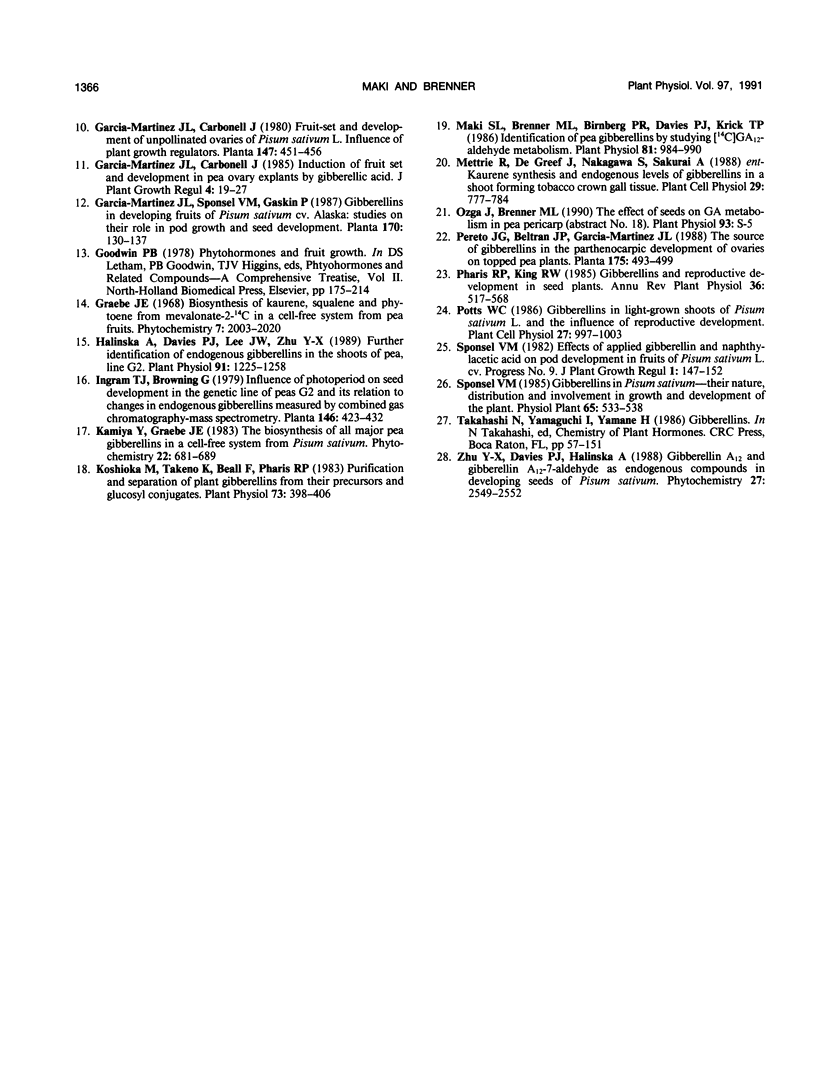
Selected References
These references are in PubMed. This may not be the complete list of references from this article.
- Birnberg P. R., Brenner M. L., Mardaus M. C., Abe H., Pharis R. P. Metabolism of gibberellin a(12)-7-aldehyde by soybean cotyledons and its use in identifying gibberellin a(7) as an endogenous gibberellin. Plant Physiol. 1986 Sep;82(1):241–246. doi: 10.1104/pp.82.1.241. [DOI] [PMC free article] [PubMed] [Google Scholar]
- Birnberg P. R., Maki S. L., Brenner M. L., Davis G. C., Carnes M. G. An improved enzymatic synthesis of labeled gibberellin A12-aldehyde and gibberellin A12. Anal Biochem. 1986 Feb 15;153(1):1–8. doi: 10.1016/0003-2697(86)90052-7. [DOI] [PubMed] [Google Scholar]
- Chung C. H., Coolbaugh R. C. ent-Kaurene Biosynthesis in Cell-Free Extracts of Excised Parts of Tall and Dwarf Pea Seedlings. Plant Physiol. 1986 Feb;80(2):544–548. doi: 10.1104/pp.80.2.544. [DOI] [PMC free article] [PubMed] [Google Scholar]
- Ciha A. J., Brenner M. L., Brun W. A. Rapid separation and quantification of abscisic Acid from plant tissues using high performance liquid chromatography. Plant Physiol. 1977 May;59(5):821–826. doi: 10.1104/pp.59.5.821. [DOI] [PMC free article] [PubMed] [Google Scholar]
- Davies P. J., Birnberg P. R., Maki S. L., Brenner M. L. Photoperiod modification of [C]gibberellin a(12) aldehyde metabolism in shoots of pea, line g2. Plant Physiol. 1986 Aug;81(4):991–996. doi: 10.1104/pp.81.4.991. [DOI] [PMC free article] [PubMed] [Google Scholar]
- Estornell Moragues F., Sendra Pina M., Beamud Gómez A., Martínez Verduch M., García Ibarra F. Características clínicas de la población afecta de reflujo vesico-ureteral esencial en la infancia. Actas Urol Esp. 1987 Mar-Apr;11(2):130–137. [PubMed] [Google Scholar]
- Halinska A., Davies P. J., Lee J. W., Zhu Y. X. Further identification of endogenous gibberellins in the shoots of pea, line g2. Plant Physiol. 1989 Dec;91(4):1255–1258. doi: 10.1104/pp.91.4.1255. [DOI] [PMC free article] [PubMed] [Google Scholar]
- Koshioka M., Takeno K., Beall F. D., Pharis R. P. Purification and separation of plant gibberellins from their precursors and glucosyl conjugates. Plant Physiol. 1983 Oct;73(2):398–406. doi: 10.1104/pp.73.2.398. [DOI] [PMC free article] [PubMed] [Google Scholar]
- Maki S. L., Brenner M. L., Birnberg P. R., Davies P. J., Krick T. P. Identification of Pea Gibberellins by Studying [C]GA(12)-Aldehyde Metabolism. Plant Physiol. 1986 Aug;81(4):984–990. doi: 10.1104/pp.81.4.984. [DOI] [PMC free article] [PubMed] [Google Scholar]


